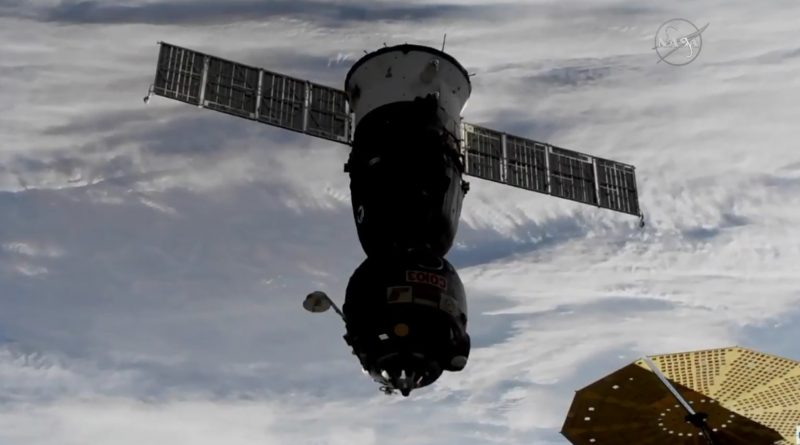Soyuz Crew begins Overnight Return to Earth with on-time ISS Departure
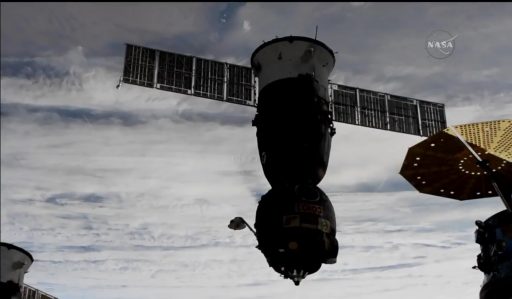
It was a short and intense handover for the Expedition 49 crew with three crew members now on their way back to Earth and the other half at the helm for Expedition 50 with ISS in their hands for the next two and a half weeks until the next crew launches from Kazakhstan.
Soyuz MS-01, the first in the improved MS series to fly, made an on-time undocking at 0:35 UTC on Sunday to mark the start of the overnight homecoming of Anatoli Ivanishin, Takuya Onishi and Kate Rubins after circling the Earth 1,840 times over the course of 115 days.
Leaving its orbital docking port, Soyuz sailed away from the Space Station by making a pair of engine firings to drift to a safe distance for the critical deorbit burn set for 3:06 UTC that aims to place the ship on a sub-orbital arc to intercept the atmosphere half an hour later to then be slowed from 25 times the speed of sound to zero in a period of just over 20 minutes.
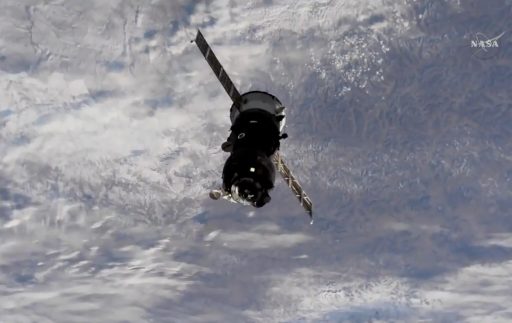
Standing by in the landing area will be a fleet of helicopters and ground-based vehicles to welcome Soyuz and its crew home on what is expected to be a slightly overcast and cold fall morning in the sparsely populated steppes of Kazakhstan. The spacecraft’s parachute-and-rocket-assisted touchdown in the Southern Landing Zone is set for 3:59 UTC to cap a memorable mission to the International Space Station for the three crew members.
The Soyuz MS-01 crew can certainly look back at a fast-paced mission, starting with a flawless launch atop a Soyuz FG rocket on July 7 followed by two a two-day test drive of the new Soyuz MS spacecraft, filled with plenty of tests of the new spacecraft capabilities such as communicating through Russia’s Luch Data Relay Satellites and making a more precise rendezvous owed to a new suite of KURS sensors and the ability to exchange navigation information with the Space Station.
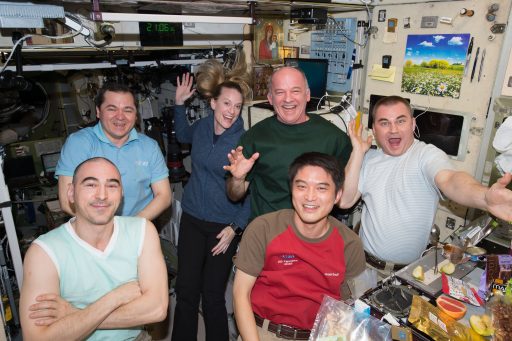
Aboard ISS, the crew joined the Expedition 48 crew for two months of joint operations, welcoming the Progress MS-03 cargo ship on July 19 and the Dragon SpX-9 spacecraft just one day later, giving the six crew members plenty of cargo to move over the next several weeks. Kate Rubins ventured outside the station for two EVAs, performed with U.S. Spaceflight Record Holder Jeff Williams to install the first International Docking Adapter that gives ISS the ability to welcome Commercial Crew missions in the coming years. The spacewalkers also retracted a thermal radiator and gave ISS some badly needed HD vision by installing a pair of cameras to be used for external inspections and Earth observation.
On board the Station, the crew also had all hands full conducting nearly 200 science experiments including the first-ever in-space DNA sequencing, giving ISS a new scientific tool that will deliver tremendous insights into changes undergone by organisms in space on a genetic level – eliminating the need for returning samples to Earth by analyzing them directly on ISS.
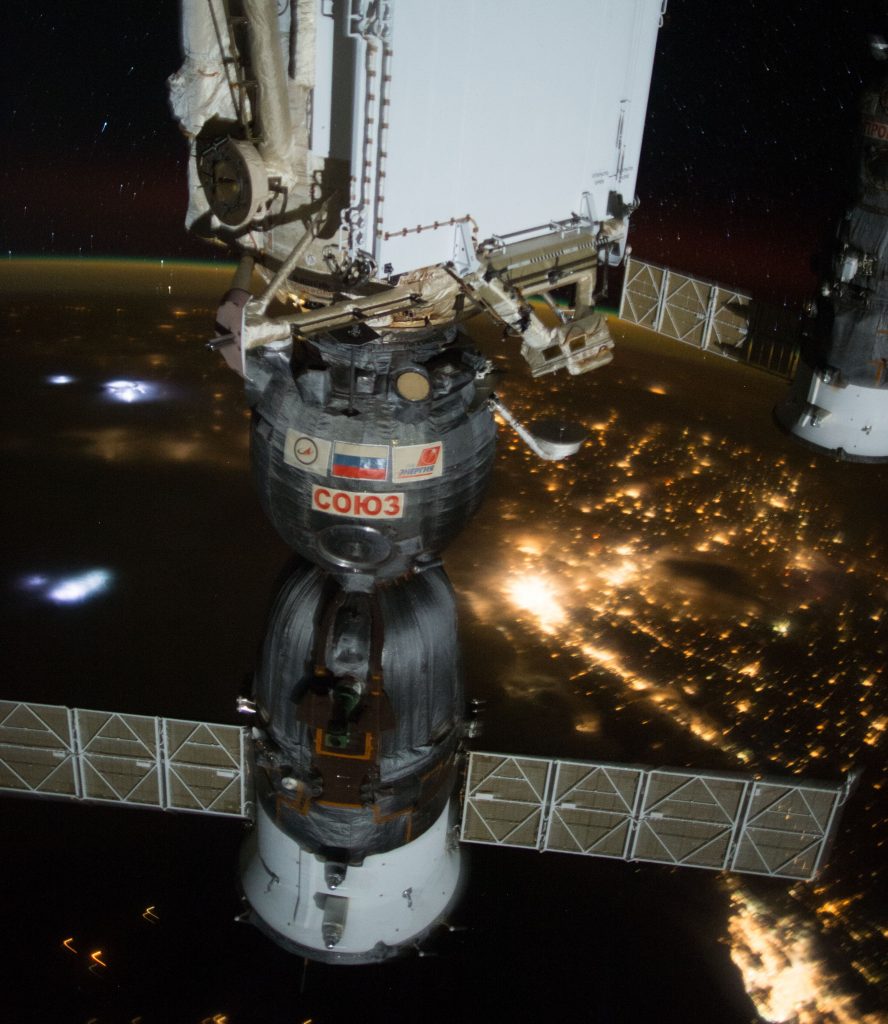
The crew of Soyuz TMA-20M, the last in the TMA series, departed ISS in early September, parachuting to a safe landing on a late summer morning. Entering Expedition 49, the crew trio expected the other half of the crew to arrive in late September, but had to keep ISS in ship shape for over six weeks on their own due to the technical delay to the launch of Soyuz MS-02.
Soyuz MS-02 headed into orbit on October 19 in a flawless ascent mission, putting Sergei Ryzhikov, Andrei Borisenko and Shane Kimbrough on a two-day approach to their orbital workplace for the next four and a half months. Their arrival on the 21st kicked off a very busy handover period including a detailed walk-through for the new crew to ensure they are aware of the intricacies of certain pieces of hardware and know about all experiments currently ongoing on ISS.
Cygnus OA-5 arrived last Sunday with a fresh batch of cargo and experiments and the week was filled with a series of experiments for the departing crew as well as an inspection of the BEAM Expandable Module for the retrieval of samples that are returning on the Soyuz vehicle. On Friday, the crew gathered for the traditional Change of Command Ceremony during which Expedition 49 Commander Anatoli Ivanishin handed command off to Shane Kimbrough who will lead Expedition 50 for the next four months.
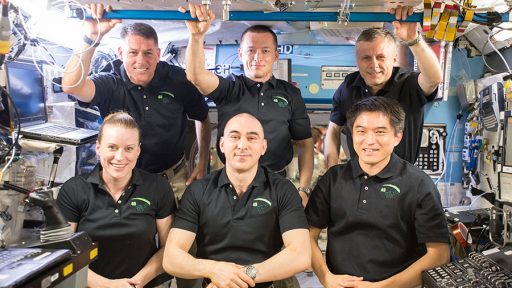
Wrapping up their stay on the Space Station, the three crew members spent the last three weeks preparing for their overnight return – packing the Soyuz with disposal and return cargo, putting their spacecraft through a series of tests, practicing the landing sequence and verifying a good fit of their suits and seats.
The crew had an opportunity to sleep in on Saturday to catch some rest for an eventful overnight return to planet Earth. Their return procedures started with the activation of the Soyuz spacecraft for a final set of testing activities including communication checks with Mission Control in Moscow that had the overall authority over the night’s operation.
Ongoing in Kazakhstan on Saturday was the pre-staging of recovery forces with helicopters being flown from Karaganda, the central staging city, to Dzhezkazgan from where it is a one-hour flight to the landing area. Off-road vehicles and All-Terrain Vehicles were deployed in the overnight hours to be in place at the primary and ballistic site, 450 Kilometers short of the bullseye target. Fixed-wing aircraft were pre-staged in Karaganda, Dzhezkazgan & Baikonur to become airborne command centers and communications terminals during the recovery operation.
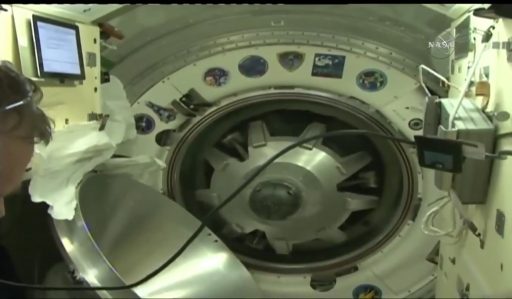
Part of the recovery team are members of RSC Energia and Rosaviatsiya specialists who can locate and recover crews at all times of day and in adverse weather. Also part of the recovery team are representatives of NASA, JAXA and Roscosmos to attend to their respective crew members after touchdown.
The Expedition 49 crew parted ways at 21:12 UTC on Saturday when the departing crew bid farewell to the now-resident ISS crew and floated into their Soyuz for the closure of the hatch. Russian crew member Andrei Borisenko closed the hatch of the Rassvet module to clear the way for the interface between ISS and Soyuz to be depressurized for a period of pressure monitoring.
While keeping an eye on leak check clocks and pressure gauges, the crew put on their Sokol Launch and Entry Suits and sealed themselves off inside the Entry Module with Ivanishin entering the center seat flanked to the left by Onishi and the right by Rubins. The crew put their Sokol suits and the Entry Module through a series of leak checks and configured the Flight Control System of their MS-01 spacecraft for free flight, also switching the vehicle to autonomous power and radio communications.
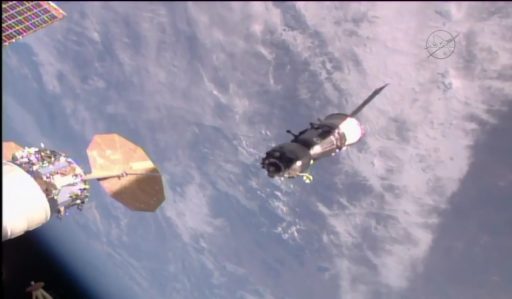
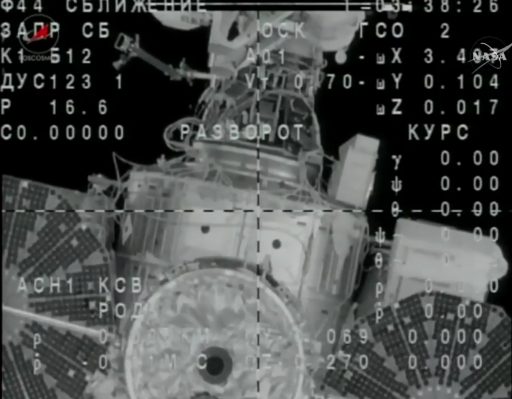
The Space Station disabled the Russian thruster system and switched the Control Moment Gyros on the U.S. Segment to a Fine Attitude Hold Mode to hold sufficiently still for the undocking sequence. No attitude maneuver was carried out in advance of undocking as has become the norm due to ISS propellant considerations – requiring the Soyuz to fly a two-burn departure profile.
Soyuz, only held in place by its own hooks after the Rassvet hooks were opened, powered up its docking mechanism and began driving open the hooks upon reception of the undocking command at 0:33:30 UTC.
No longer mated to ISS, Soyuz was pushed away by loaded springs at 0:35 UTC while the complex was flying 400 Kilometers above Mongolia. Departing ISS after a stay of 113 days, Soyuz drifted away passively for three minutes before re-activating its thrusters to move out of the vicinity of the Space Station.
An initial separation burn of eight seconds increased the departure velocity along the R-Bar by 0.5 meters per second and was followed by some serious manual flying by commander Ivanishin who put the new Soyuz MS manual motion control system through its paces. He made inputs on the Translational and Rotational Hand Controllers and studied the spacecraft’s response to ensure future crews have no problems flying manually whenever needed.
The second departure burn was also completed manually by Ivanishin, firing the translational DPO thrusters to put Soyuz on the usual V-Bar departure out of the Station’s Approach Ellipsoid.
Seen from Soyuz, ISS quickly got smaller as the spacecraft moved away, starting to open a gap of 12 Kilometers for the deorbit burn.
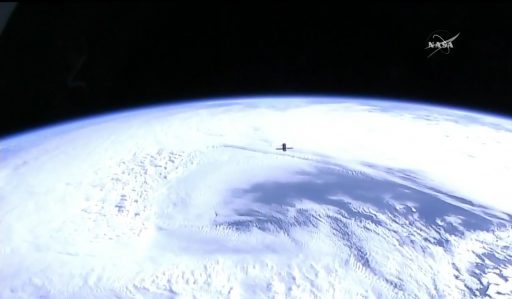
Soyuz will transition to a tail-first orientation and open up the protective cover of its SKD main engine as it heads out over a final pass over the Pacific Ocean. Ignition of the 300 Kilogram-force S5.80 main engine is expected at 3:06:35 UTC for a burn of 4 minutes and 37 seconds.
Hitting the brakes, Soyuz will have to slow down by 128 meters per second to achieve the proper re-entry trajectory en-route to the landing site in the Kazakh steppe. Commander Ivanishin will keep close watch over the maneuver and read out relevant parameters to Mission Control through the communications link provided by relay through ISS and the Luch satellites in Geostationary Orbit.
Upon completion of the braking maneuver, the crew will close their helmets and the Orbital Module will begin its depressurization to set up for the pyrotechnic separation of the modules. Soyuz will be on a north-easterly heading at that point, passing into daylight just before crossing the equator for the crew’s final orbital sunrise.
At an altitude of 140 Kilometers with only three minutes to go until re-entry, Soyuz will fire a series of pyrotechnics to separate in three parts with the Orbital and Service Modules pushed into opposite directions ahead of their destructive re-entry. The Entry Module will then fire up with Hydrogen Peroxide thrusters to point its heat shield forward in readiness for a blazing re-entry.
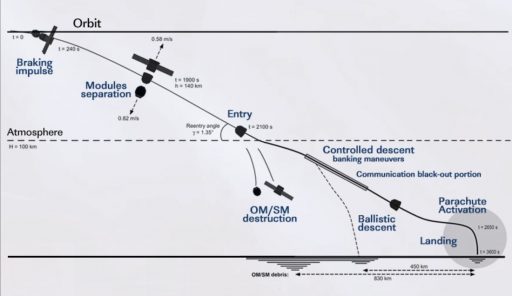
Soyuz will hit the atmosphere at 03:36:26 UTC as it descends through 100 Kilometers in altitude, traveling 7.6 Kilometers per second. Soyuz will stick to a pre-programmed entry attitude for 89 seconds before enabling Entry Guidance to bleed off energy in a series of bank maneuvers while precisely controlling its downrange travel distance by modifying lift. Barreling through a blaze of plasma, crew will pull around 4Gs when Soyuz is 34 Kilometers in altitude, rapidly decelerating for the opening of the parachutes.
Soyuz slows to a speed of 210 meters per second for the opening of its parachutes at an altitude of 10.8 Kilometers. The three-stage deployment sequence begins with the release of a pair of Pilot Chutes that pull out the Drogue Chute – creating one of the most turbulent flight events as Soyuz shakes for around half a minute before stabilizing under the Drogue which slows the craft to 80 meters per second. At that point, around 7.5km in altitude, the huge orange-and-white Main Chute will be deployed to further slow the Soyuz down and transition to a vertical descent.
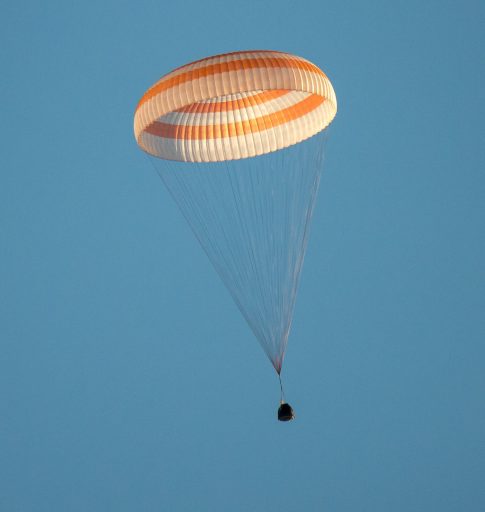
Once in a gentle descent toward the landing site, Soyuz will execute its landing program – an automated series of steps encompassing the separation of the heat shield to expose the landing engines and altimeter, the re-hooking of the chute to a symmetric descent, the release of the blackened window covers and the equalization of cabin pressure.
Soyuz is aiming for a remote area in the Kazakh steppe, 147 Kilometers south-east of the town of Dzhezkazgan where All Terrain Vehicles will be waiting for the crew’s arrival along with helicopters that enter a racetrack pattern as soon as the descending Soyuz is spotted.
Soyuz will fire its solid-fueled landing engines when sensing touchdown is imminent to cushion the always-noticeable contact with Terra Firma. Landing is expected at 3:59:13 UTC, marking the end of a flight of 115 days, 2 hours and 23 minutes.
Recovery forces will begin descending on the landing site to assist the returned crew members out of their capsule to be then seated in reclining chairs for a breath of fresh air after their return.

